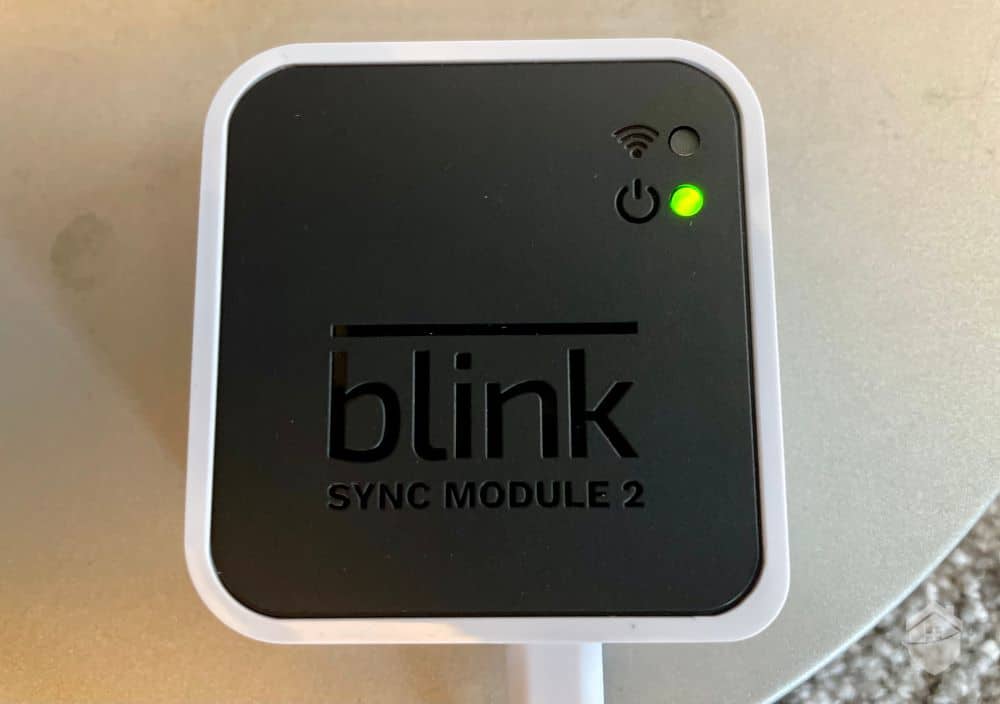Vivint and Ring home security systems are both extremely functional. They offer a wide variety of features, but there are key differences when it comes to pricing, installation, technology, and 24/7 monitoring. Have a look at how these two popular brands measure up against one another.
Overview: Ring vs. Vivint
When it comes to protecting your family from intruders, you’ll want the best of the best. You’re going to want equipment that is easy to use, well-designed, and — most importantly — works when you need it most.
Both Ring and Vivint fit the bill in those regards and more. Both get high marks from us in terms of effectiveness, reliability, and technology. They’re affordable, easy to use, and will protect your family in a variety of ways.
That said, the two have very different approaches to home security. We’re going to get into all of that in just a bit, but one of the biggest takeaways is that Vivint is very much a hands-off security system — they have white-glove service for everything — whereas Ring takes a more DIY-friendly approach. They also differ significantly in terms of equipment offerings and monitoring service.
Before you commit to either system, it’s best to take a look at how they stack up against each other.
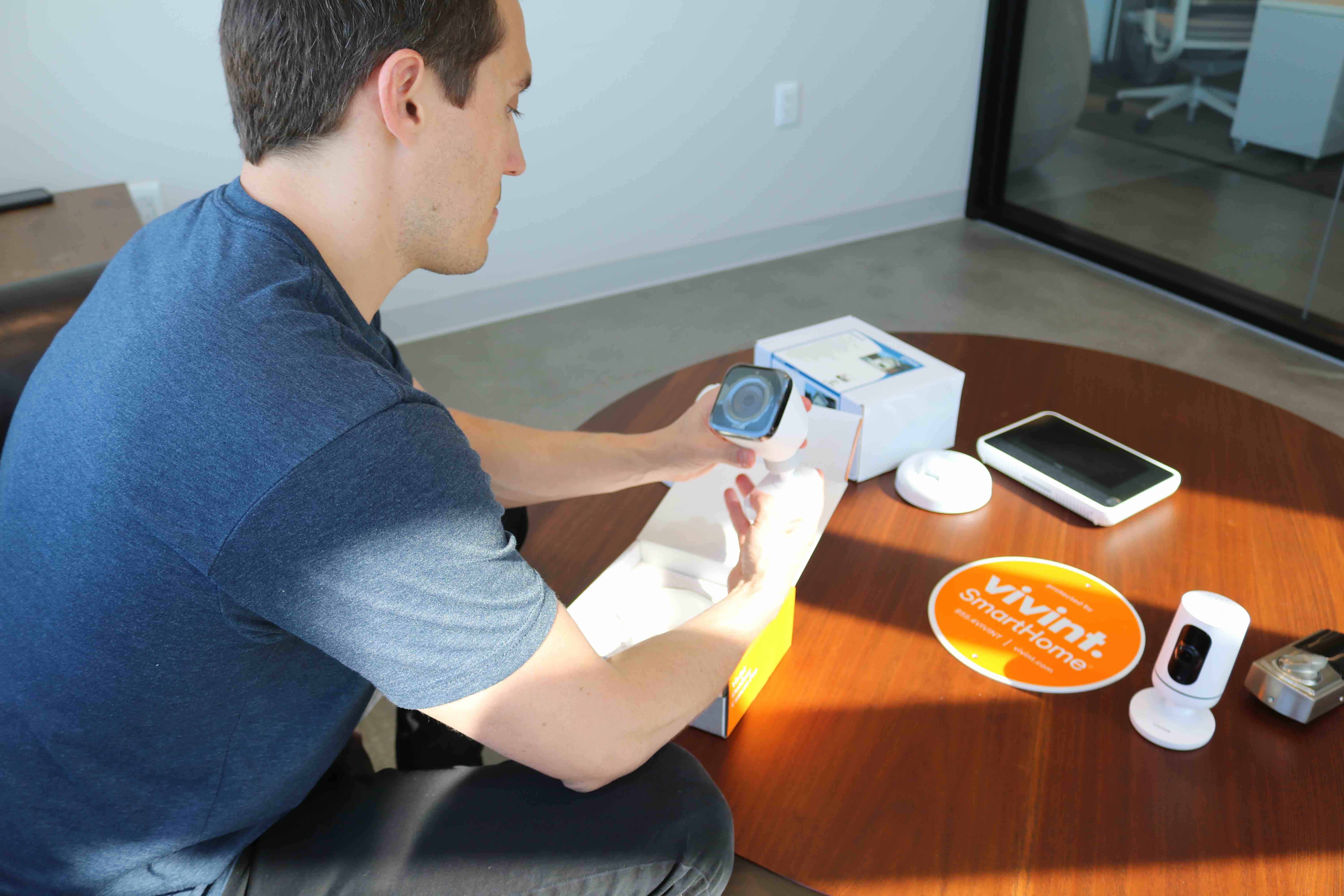
Senior Editor Andrew Garcia unboxing Vivint Outdoor Camera
A few facts to get you started:
- Both systems offer indoor, outdoor, and doorbell cameras.
- You’ll need to sign a contract with Vivint, unless you plan to buy the equipment upfront.
- Vivint offers loads of smart home automation features and integrations, while Ring offers full integration with Alexa.
- With Ring, you can order online, over the phone, and even at some brick-and-mortar stores. With Vivint, your only option is to order over the phone.
We’ve tested both of these systems, and looked carefully at all their features, including Ring’s new pricing structure. They each have a great deal to offer. The question is, which one is right to help protect your home and family?
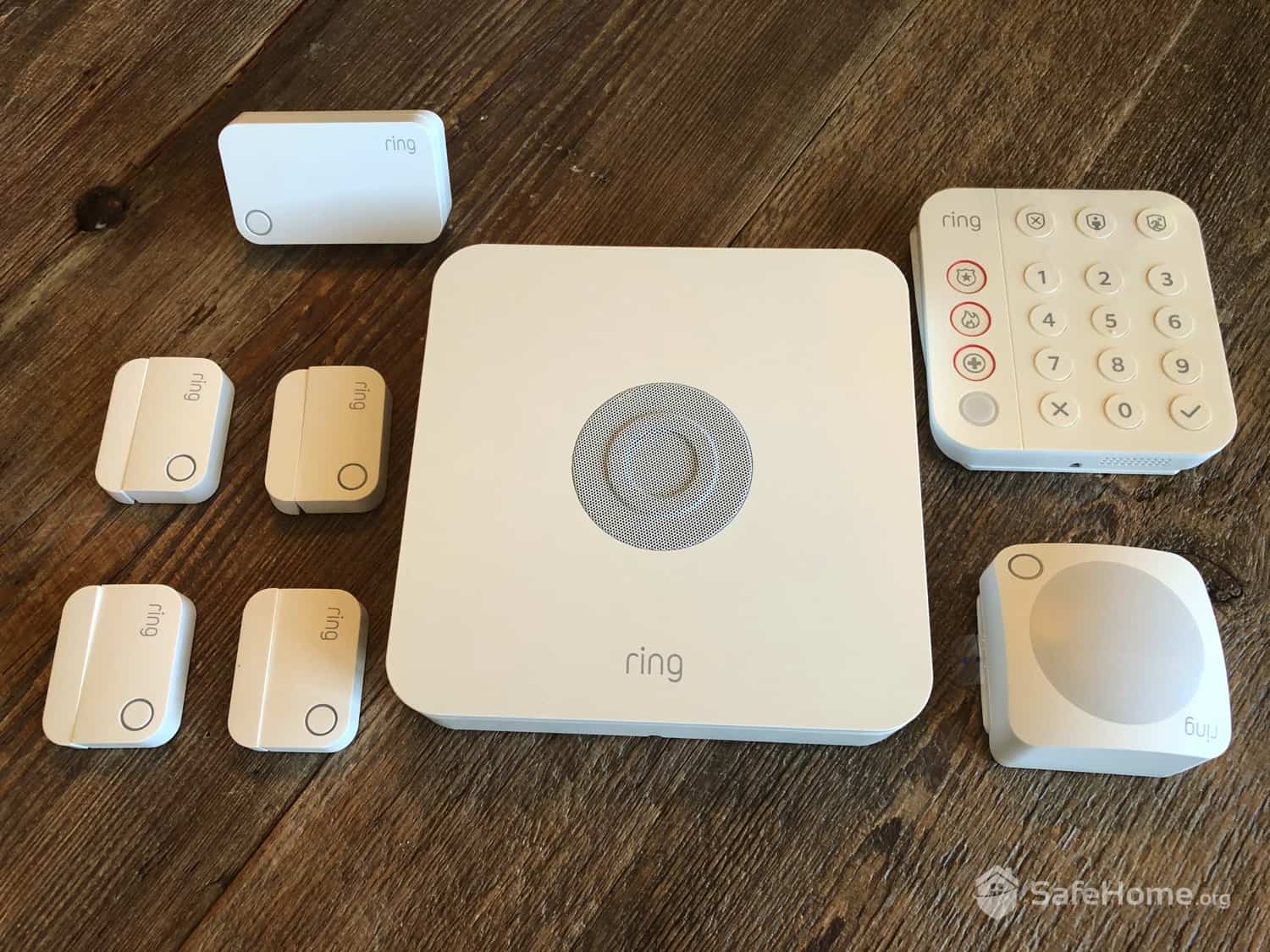
Ring Alarm (2nd Gen) Equipment
Similarities: Total home protection with 24/7 monitoring
So first things first, we should talk about how these two systems are similar. There are quite a few features and functionality that Vivint and Ring share. Here’s a quick punch list.
- Mobile app so you can monitor your home 24/7 via your phone
- Doorbell video camera with two-way voice
- Quality cameras for both indoor and outdoor use
- Visually appealing design
- Environmental sensors (flood, water, fire, freeze)
- Home automation
- 24/7 professional monitoring available
So that’s about it for the similarities. Now we need to get into the really important stuff — how these two security juggernauts differ.
Differences: Installation, price, features
We found several differences between the Vivint and Ring home security systems. First up, you’ll pay more with Vivint, for both the equipment and the compulsory professional installation. Of course, you can soften the financial blow by financing your equipment, but that requires signing up for a long-term contract. In addition, Vivint doesn’t offer self-monitoring or month-to-month monitoring subscriptions, so you’ll also have to sign up for a 48-month monitoring plan, which means more money. But again, this is top-of-the-line smart home security we’re talking about.
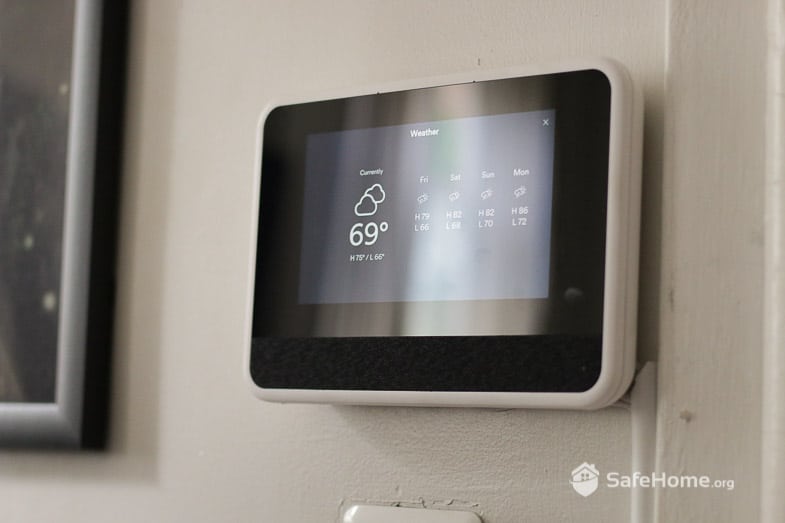
Vivint – Smart Hub
Now we will say that at the end of the day, you’ll pay significantly less when you go with a Ring system. But what you don’t pay for in money, you do pay in other ways. For one, you can save with a DIY install, but you have to invest time or at least call in a favor from the neighborhood handyman. Also, Ring is a little lacking when it comes to the time-saving automation features that Vivint boasts.
Monitoring capabilities is another key difference. Vivint requires its customers to subscribe to its 24/7 monitoring service. The service is highly responsive and it significantly reduces emergency service response times compared to self-monitoring.
Bottom line: If you do choose Vivint, you get premium gear and a professional installation, as well as the option for a dependable 24/7 monitoring service. With Ring, you still get a great home security solution, but at a potentially lower price point. Other notable difference include:
- Ring offers easy, DIY installation
- Vivint must be professionally installed
- Vivint offers a lifetime warranty on most products
- Vivint offers cellular monitoring with much faster response times
- Ring's system runs off of Wi-Fi with cellular backup
- Ring is much cheaper, but Vivint offers high-tech smart home features and better connectivity
Equipment Features
Ring’s doorbell video camera is a household name, and no surprise, our favorite feature. The video quality has made it stand out from other security cameras for years. Additionally, their coverage and user-friendliness are second to none. We were blown away by how much we could see when we linked our Ring doorbell camera to our Ring Alarm. The resolution and audio are crystal clear. Our favorite perk? You can easily install it yourself and be up and running in under an hour without professional help.
Ring allows you access to lots of home automation through both Alexa and Google Home. However, that automation is piecemeal, made up of lots of products in the Alexa and Google Home ecosystem. With Vivint, you can get complete home automation and a mobile app that allows you to operate almost every aspect of your system while you're away from home. In using the products, the app and Vivint touchscreen literally put muscular smart home features at our fingertips.
Pro Tip: Both Vivint and Ring offer environmental sensors that can alert you to dangers in your home, but they won’t protect you from these four toxic household gasses. Read up on that page to learn how to protect yourself!
While Ring has plenty of Google integrations you can add to create a comprehensive smart home, Vivint has a self-contained smart home ecosystem. You can choose from a comprehensive list of devices during the initial installation or buy these later. Incidentally, Vivint has its own video doorbell with two-way communication, along with indoor/outdoor cameras. You can also use a Nest thermostat in tandem with Vivint.
With Ring, you’re primarily going down the DIY road, but don’t let that scare you. The most basic home security kit from ring is a five-piece kit that includes a base station, keypad, entrance sensor, motion detector, and alarm range extender, for $199.99. Of course, you’ll want to add a Ring Doorbell or you could purchase a Whole Home package that includes Ring’s trademark device. The most basic Whole Home package adds a battery-powered doorbell and indoor camera to the five-piece kit for $369. Once we got our Ring devices, we found them easy for pretty much anyone to mount and set up.
All About Contracts
Contracts are a big point of difference between Vivint and Ring.
Most people aren’t particularly fond of contracts, and we’re most people. But if you want full home automation between your existing smart home devices and your new Vivint system, and you want to get it all installed professionally and without headaches, you’ll need to sign at least a four-year contract. If you would rather buy the Vivint equipment upfront, you’ll need to pay monthly installments in addition to the monthly monitoring fees. Together, it will cost you upwards of $50 per month. But as you’ll see, we think it’s a good price to pay for the total home protection (plus home automation) that you’ll enjoy.
Ring, on the other hand, does not require a contract. Instead, you have the option to pay for DIY monitoring features and a monitoring service on a monthly basis. Ring’s monitoring plan costs $20 per month, which already includes cloud storage for all your Ring cameras.
Clearly, if you want effective smart home security but contracts aren’t your thing – and we completely understand if that’s the case – Ring is the way to go. With that said, if you can afford Vivint, you will probably love its comprehensive coverage and be willing to sign a contract for it. After all, Vivint ranks in our top 3 favorite home security systems (out of the dozens and dozens we’ve tried!).
Pricing – Vivint vs Ring
Like we said above, Vivint’s installation fee alone might cost you more than the price of Ring’s most basic DIY security package. There’s a chance you might be able to get that Vivint install fee waived: Remember, it doesn’t hurt to ask.
As far as monitoring goes, Vivint’s Basic plan starts around $30 per month. Your total bottom line is going to vary based on the equipment you select, and remember, Vivint doesn’t price things individually, nor are they transparent about their costs on their website. You’ll need to call them and speak to a representative. When all is said and done, though, expect to pay at least $600 up front unless you sign a contract to pay for everything over time.
With Ring, you’ll pay less upfront, but of course you’ll spend more if you upgrade and add equipment as you go. If you buy Ring’s basic Whole Home security system directly from the company, it’ll run you about $369. If you just want the video doorbell, they start at $49 for the wired version and go up to $229 for the Battery Doorbell Pro.
Ring also gives you the option to take the DIY approach when it comes to home security monitoring. The Ring Protect plan essentially puts monitoring in your hands with three different packages. At $4.99 per month or $49.99 per year, the basic package includes video alerts and up to 180 days of video event history for one camera. At $9.99 per month or $99.99 per year, the Plus package activates those features for all your Ring cameras. At $19.99 per month or $199.99 per year, the Pro package adds professional monitoring with cellular backup for the Ring Alarm.
Ring also offers a third-party monitoring service through Rapid Response that’s called Virtual Security Guard for $99 per month. With this plan, monitoring agents start observing a potential situation when a suspicious person is detected. Agents can intervene by speaking to the suspect person using camera speakers, sounding a siren, and contacting emergency dispatch. To sign up for this service you must have compatible security cameras, the Ring Alarm, and the Ring Home plan.
| Ring Alarm Kits* | Coverage | Cost |
|---|---|---|
| 5-Piece Alarm Security Kit | 1 window/door, 1 motion detector, 1 range extender | $199.99 |
| 8-piece Alarm Security Kit | 4 windows/doors, 1 motion detector, 1 range extender | $249.99 |
| 14-piece Alarm Security Kit | 8 windows/doors, 2 motion detectors | $329.99 |
*Ring Alarm Kits do not include cameras.
Keep in mind, Ring often puts their equipment packages on sale, so keep an eye out here and on their site for the latest deals. You can also check our Ring sales roundup. We keep that up to date with the most recent discounts.
Equipment & Packages
If you purchase a home security kit from either Ring or Vivint, you’ll get a base station, keypad (Vivint combines both but with a sleek 7” touchscreen), and door/window sensors. You can also buy cameras separately from Ring and Vivint, and you can customize camera types, locations, and angles as you need to.
We think Ring takes the cake when it comes to security cameras and home surveillance. Ring offers five types of their doorbell cams, as well as a peephole cam which are great for apartments (or if you just like peepholes.) You can also choose from Ring’s indoor and outdoor cameras; we highly recommend the Spotlight Cam.
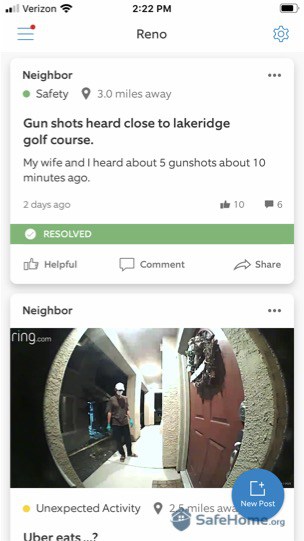
Ring Alarm App Dashboard
Note that Vivint offers fewer equipment options, but it’s all high-quality stacked with amazing features. For instance, their Video Doorbell Pro offers 1080p HD resolution, an impressive 180-degrees field of view, and active theft deterrents (lights & siren). But remember, Vivint does not list equipment (or prices) online, since they’re all about individual customization.
Keep in mind that all of this equipment can be controlled by a mobile app, which is free to download for both Ring and Vivint.
Want help choosing a security system?
Answer 8 simple questions and we'll recommend the system that is right for you.
Start QuizInstallation & Set Up
When you read the word “installation,” does your blood pressure tick up a couple units? Yeah, ours too. It’s such a loaded word: even an installation as simple as putting up a shower curtain can end up causing headaches and mishaps if you’ve never done it before, or if you just lack handy skills.
From our hands-on experience with both products, we know that Vivint and Ring take very different approaches to installation. Vivint basically says, “Sit back and relax, we’ve got this.” Ring, on the other hand, says “You’ve got this, and we’ll show you how.” That being said, Ring does offer installation services for its products if the DIY approach isn’t for you.
Let’s start with Vivint. The company doesn’t even offer a DIY option. That means you have to set up a professional installation appointment. And, they’re not kidding when they say you need professional installation. For example, the doorbell camera has to be wired directly into your existing doorbell wiring. Of course, installation isn’t free, and we never like it when a company forces us to buy services. Still, we have to admit that Vivint tech experts are incredibly knowledgeable. They knew exactly where to put cameras and other equipment so that every corner of our home was protected. As a bonus, they were also incredibly friendly. They even put little booties over their shoes when they came into our home.
On the opposite side of the spectrum, Ring's home security system can be completely DIY. If you don’t mind rolling up your sleeves and doing some light troubleshooting, this might be the option for you. But if you’re not the DIY-type, Ring installation fees start at $159.99.
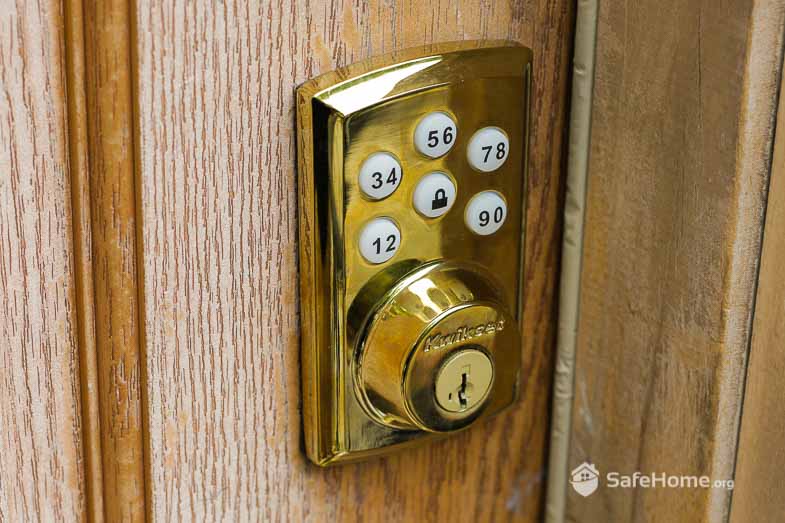
Vivint – Smart Door Lock
Summary: Vivint is King
Make no mistake: we’re really impressed with both Vivint and Ring. These systems are top-of-the-line in terms of features, monitoring capabilities, and service. But the fact that Vivint’s requires professional installation should tell you all you need to know about how powerful (yet easy to use!) Vivint really is.
With Ring, you don’t need a single ounce of tech experience or skill to interact with any of their products – not the doorbell, not the indoor/outdoor cameras, not the alarm kit, none of it. Yet with all of that convenience, you still get many of the features that normally come with more expensive home security systems. To us, that’s a win-win.
Overall, we have to say that Vivint is the better system, with a couple of caveats to keep in mind. First, you’ll probably have to sign a long-term contract (no biggie if you’re planning on living in your home for a few years). You’ll also pay more for the system compared to Ring, but that’s to be expected considering its powerful security and smart home capabilities. And finally, the compulsory professional install isn’t our favorite. But if you can overlook these things, we think Vivint brings a whole lot to the table in terms of protecting your family and transforming your house into the smartest home around.







